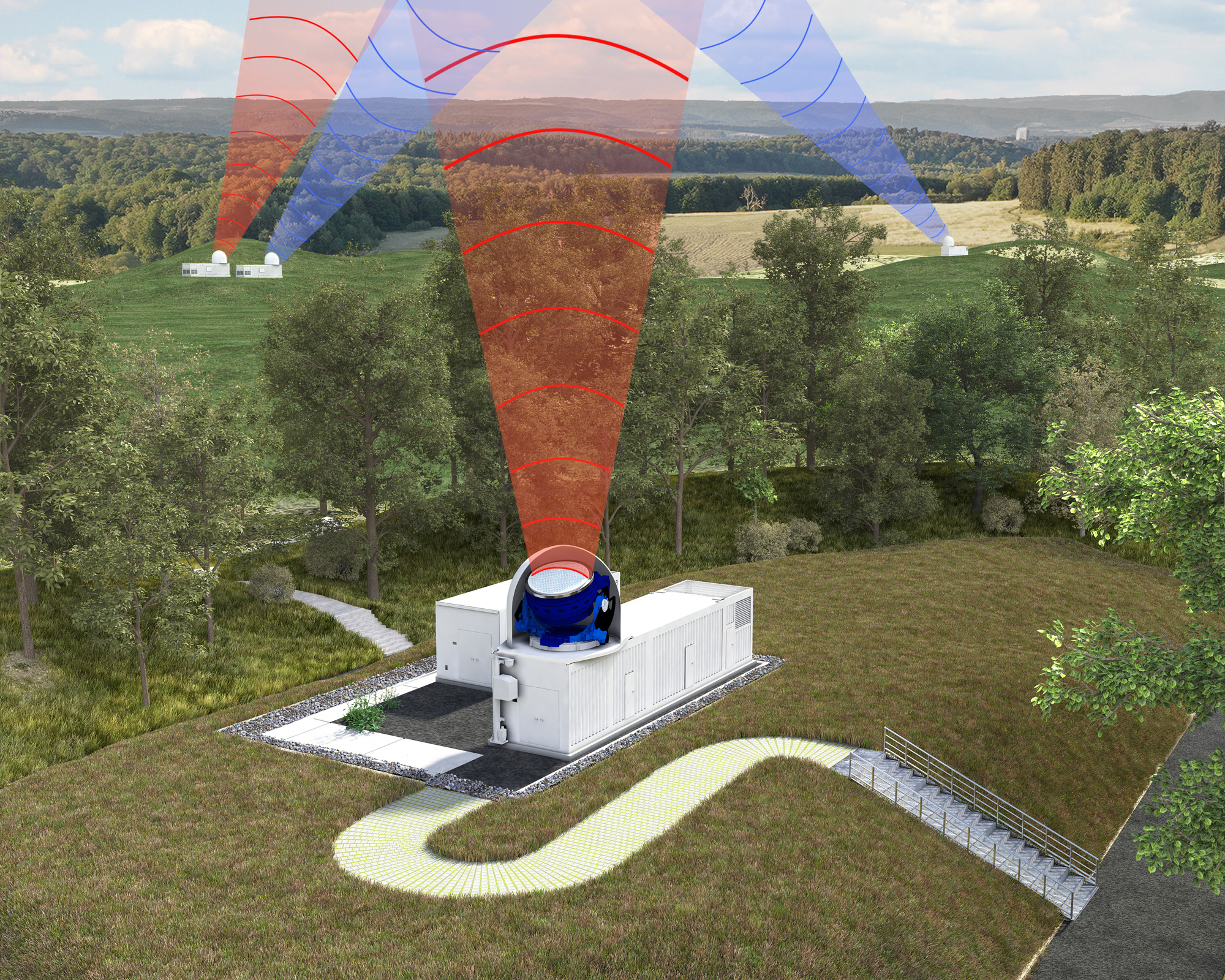Detect space debris better with higher transmitting power
The increasing amount of space debris is becoming more and more dangerous for active objects in space. An accurate catalogue of the debris particles orbiting the Earth enables satellites to avoid collisions. The space surveillance radar GESTRA, which was developed by Fraunhofer FHR, contributes to this catalogue. An additional transmitter unit shall now furthermore increase the detection performance of the GESTRA network, allowing it to detect even smaller debris particles.

When thinking of outer space, most people probably have an empty and infinitely wide space in mind. The low Earth orbit, however, is not that empty any more: It contains more than a million inactive objects – space debris that can no longer be controlled. Active satellites circling around in space therefore almost have to complete an obstacle course.
The GESTRA space surveillance radar helps to detect and catalogue the various objects in a large section of space, so satellites can fly evasive maneuvers if necessary. More specifically, it is a quasi-monostatic system, a phased array radar with high range and beam agility, consisting of separate transmit and receive systems. In 2020, the GESTRA EUSST project for another receiver was commissioned at Fraunhofer FHR. On December 1, 2021, Fraunhofer FHR researchers started building an additional GESTRA-compatible transmitter unit in the GESTRA TX2 project. It will use a different transistor technology and be twice as powerful as the current transmitter. Thus, when GESTRA is combined with the new system, the transmitting power will increase by a factor of three. This leads to different improvements: On one hand, the range will increase, i.e. the system can see further into orbit. On the other hand, and more importantly, it allows much smaller debris to be detected. The interconnected system could then observe junk parts only a third the size of those GESTRA can detect on its own. A special feature: All departments of Fraunhofer FHR are involved in the development – seven in total plus research groups. The Fraunhofer institutes IWU and IPM provide additional support for the development of an innovative cooling technology for the planks.
Development of an antenna concept
The first goal of the project is to create a concept for the transmitting antenna. This concept includes two PCB prototypes. The first one consists of the transmitting module, which shall have an increased power: This will be realized by a multistage amplifier chain with high power amplifiers connected in parallel. The module will be completely redeveloped, including all the necessary monitoring functions – in other words, the vital parameters of the system. The GESTRA single antenna element also has to be optimized: Can the GESTRA concept be operated with twice the transmission power? Does this require a new development of the antenna element and possibly also of the antenna array? These questions must be answered in the first period of the project.
The second prototype is the circuit board that generates the transmit signal in a decentralized manner. The researchers are redesigning the entire signal generation concept. While in the GESTRA system an RF signal is generated at one point and distributed to all antenna elements, in the TX2 system an individual signal will be generated for each transmitting module. How can these decentralized signals be kept synchronized? This approach is new territory – it has only been done in a few projects so far. Initial ideas are already available.